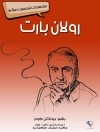Brimming with the fascinating eccentricities of a complex and
confusing movement whose influences continue to resonate deeply,
30 Great Myths About the Romantics adds great clarity to
what we know – or think we know – about one of
the most important periods in literary history.
* Explores the various misconceptions commonly associated with
Romanticism, offering provocative insights that correct and clarify
several of the commonly-held myths about the key figures of this
e...
Tabella dei contenuti
Acknowledgements xi
Introduction xiii
A Note on Monetary Values xxvii
Myth 1 Romanticism began in 1798 1
Myth 2 English Romanticism was a reaction against ...
Circa l’autore
Duncan Wu is Professor of English at Georgetown
University in Washington, DC. He is the editor
of Romanticism: An Anthology, 4th edition
(Wiley Blackwell, 2012), a...












